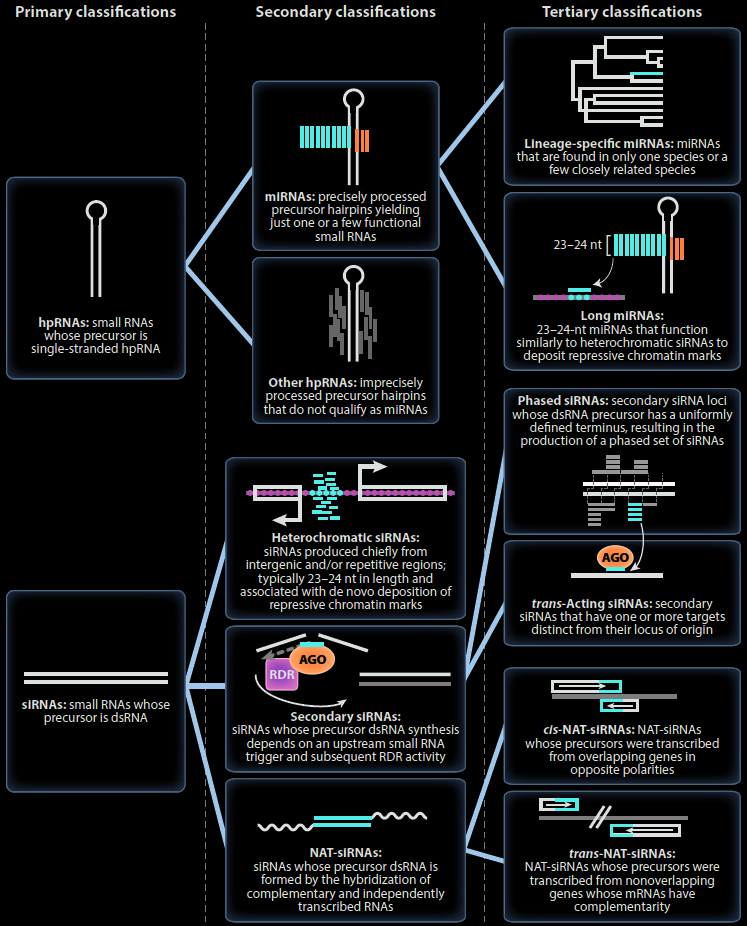Welcome to another post of Molecular Nature series highlighting a gene silencing mechanism known as RNA interference. The animation was produced by Katharina Petsche. The discovery was made by Craig Mello and Andrew Fire who shared 2006 Nobel Prize in Physiology and Medicine. Please keep in mind that this video is quite advanced in content and assumes the viewers know about basic molecular biological concepts such as the Central Dogma of Biology.
RNA interference (RNAi) is a process used by wide range of organisms to regulate the activity of genes. This animation summarizes how RNAi works by two regulatory classes of small RNA molecules called small interfering RNAs (siRNAs) and microRNAs (miRNAs). After genes are transcribed to make messenger RNA (mRNA), RNAi can be deployed to silence (or downregulate) mRNAs and interfere from making proteins. This interference is possible by formation of RNA-induced silencing complexes (RISC) where individual small RNA strands are each docked inside an Argonaute protein.
The following image was taken from an extensive review by Michael Axtell of Penn State University on the classification and comparison of small RNAs from plants. It encapsulates the diverse kinds of small regulatory RNA such as double-stranded RNA (dsRNA); hairpin RNA (hpRNA); microRNA (miRNA); natural antisense transcript small interfering RNA (NAT-siRNA); small interfering RNA (siRNA).
The ability of RNA to copy, transmit and regulate information as well as catalyze reactions and build other molecules is fascinating. For this reason the evidence is growing that first living organisms emerged using RNA instead of DNA. This scientific view of explaining emergence of life is know as RNA world hypothesis.
The following video is similar to the featured video in this post but additionally mentions about an interesting fact known as “RNAi spreading” (starting from 3:35) where mRNA is used as template to generate double-stranded RNA which then gets cleaved and enters RNAi pathways. RNAi spreading is well-documented in plants.



0 Comments
You can be the first one to leave a comment.